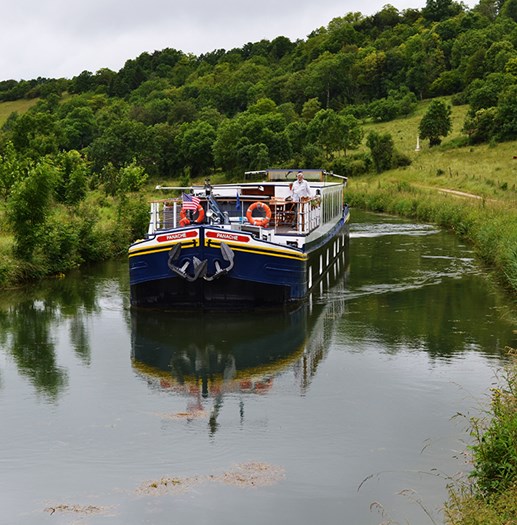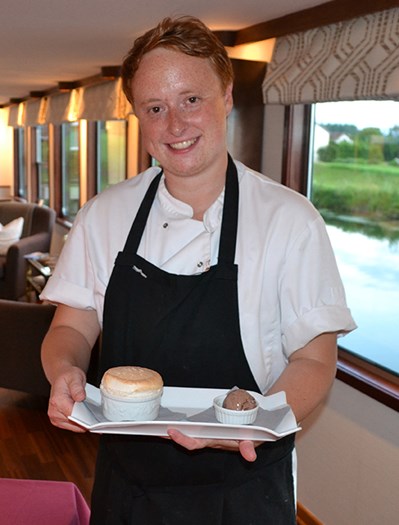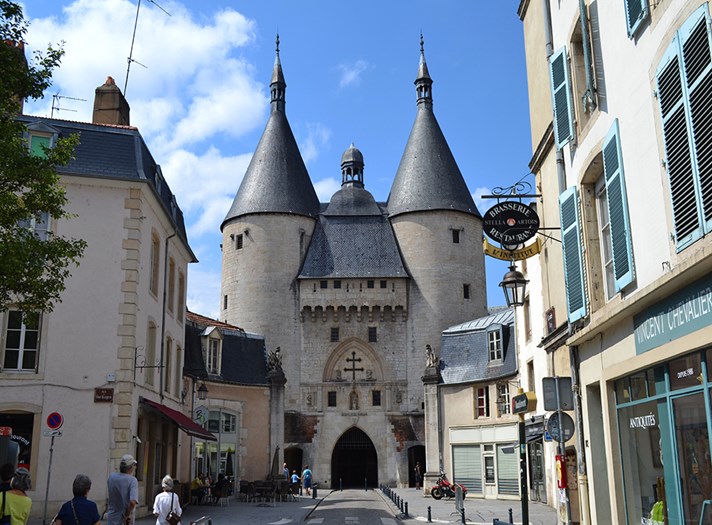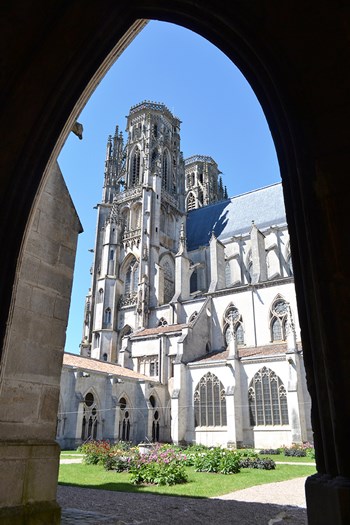STRASBOURG, FRANCE - I had been looking forward to this trip for a while. Not just because it would be my third visit to fascinating France, but also because of the mode of transportation I would be using to get around during my six days here — a barge. And not just any old commercial barge, but a luxury European Waterways barge with all the amenities of a 5-Star hotel.
The Panache, a sleek 30-metre-long barge that carries 12 passengers who are lovingly cared for by a crew of six, would take me on a leisurely cruise along the backwaters of France and let me see this amazing country from a whole new perspective.
The beguiling vessel, with gaudily-painted red and yellow nameplates on its bow, was transformed in 1998 into the floating palace it is today featuring six quite large below deck junior suites with en-suite bathrooms, fitted wardrobes, bedside tables and writing desks. On the main deck, the Panache features a spa pool, a sun deck, a lounge with dining area, plus the galley.
In all, it was just big enough that I didn’t feel cramped, and with the small number of passengers, it gave an intimate, cozy feeling that I liked.


Left: The barges slowly traverse France's inland canals. Right: Guests are treated to some gourmet meals.
After unpacking in my spacious suite, I toured the main deck where I discovered bicycles strapped to the railings and couldn’t wait for the next morning to come so I could get a chance to try one of them out on the towpath that runs alongside the canal. Here’s how it’s done: once the barge enters the lock — and there are a number of locks on France’s many canals — and the water raises the boat to ground level, it’s safe to haul out the bikes, and you’re on your way.
I rode for several kilometres through small French villages with onion-shaped church steeples, belted out “Bonjour” to passersby with my best French accent (you should always say the “jour” part with great inflection), soaked up the fresh, vibrant smells of the countryside along the canal, and snapped pictures of Panache’s other passengers merrily cycling along the towpath with me. In the evenings, the boat always docked at a quiet place near a small town, and I took advantage of these moorings to visit places like Pagny-sur-Meuse, a tiny village of 1,000 located on a hill near the Lorraine Regional Nature Park. The town, existing at least from the 7th century, is known for its limestone and sand — the sand deposited by the Moselle before that river changed course. It’s also known for its wild horses, which were brought from Poland.
Our waterway, the Canal de la Marne au Rhin, was built between 1838 and 1853 as a link between Paris, Alsace and Germany. Along its 287-kilometre route are rich wooded valleys, pastoral grazing lands for sheep and cattle, tiny French hamlets with ocher-coloured houses and small shops, along with the town squares where the weekly food markets are held. Our hotel barge was only travelling a small segment of the canal, between Tronville and historic Nancy.
I am told this area has changed hands many times and was largely influenced by the rivalry between French and German nationalism. France wanted to preserve its natural boundaries, such as its land adjoining the Rhine, and Germany wanted to annex territories where German was spoken. The Germans created the Imperial Territory of Alsace-Lorraine in 1871 following their victory in Franco-Prussian War.
Enough history. It’s time for lunch, which is prepared on the barge by our young British Chef Todd. Today’s menu: a buffet of Charcuterie, various cheeses, pâté, quiche, duck liver parfait and, for dessert, a lemon curd and blueberry crème brûlée — all pared with a Rully Prosper Monfoux 2012 white wine and a Fleurie Villa Ponciago 2011 red, both excellent choices. Learning about the influences and background of the region seemed more palatable after a few sips of these delicious wines.


Above: Travelling on a barge through France introduces you to some hidden historic towns and villages.
In the afternoon our captain, Arnault, led passengers on a guided tour of ghostly World War I trenches near St. Mihiel. Sadly, this area was where the most deaths occurred during The Great War.
The day before, we journeyed off the barge to visit the town of Vaucouleurs, from which fearless Joan of Arc departed with an escort in 1429 on her epic journey to Chinon to meet with Dauphin, Charles VII.
Included in the tour was the intimate Museum of Joan of Arc filled with her images, and the Castle Chapel, with its magnificent stained glass windows.
The chapel’s darkened crypt is where Joan would often kneel and pray. The dim light, together with the musty, centuries-old cobwebbed crypt, brought Joan of Arc’s life into perspective for me. She was a saint in my book.
A guided tour of Nancy, the historical capital of the Duchy of Lorraine, with its impressive wrought iron golden gates and its perfectly harmonious square, was another outstanding memory.
An afternoon stop in the middle of the Old Town for refreshments in the shade of a large restaurant umbrella capped the day.
My first trip like this hopefully won’t be my last. I quickly got used to this luxury barge and all its modern conveniences, the superb food and wines, and enjoyed the warmth and helpfulness of the crew. I figure there are plenty more French canals I haven’t sailed yet, but now absolutely need to experience.
Information
Hotel barge operator: European Waterways, sales@gobarging.com. In Canada call 1 877 574 3404. / For barge information, go to gobarging.com / French tourism: au.france.fr
About the Author
As a travel writer/photographer, Don has written a number of travel articles about both U.S. and European destinations. Don writes for a number of publications, having earned a degree in journalism from the University of Illinois. He has been a newspaper reporter, editor, publisher and once even owned his own newspaper. At age 14 he started his own magazine, and today publishes three magazines and has written 12 books. He also worked for 10 years in corporate public relations in downtown Chicago, and while serving in the U.S. Army became editor of the Army newspaper at Fort Knox, Kentucky. Don hosted his own radio show for 2 years and has appeared on Public Television's (PBS) Tracks Ahead program.